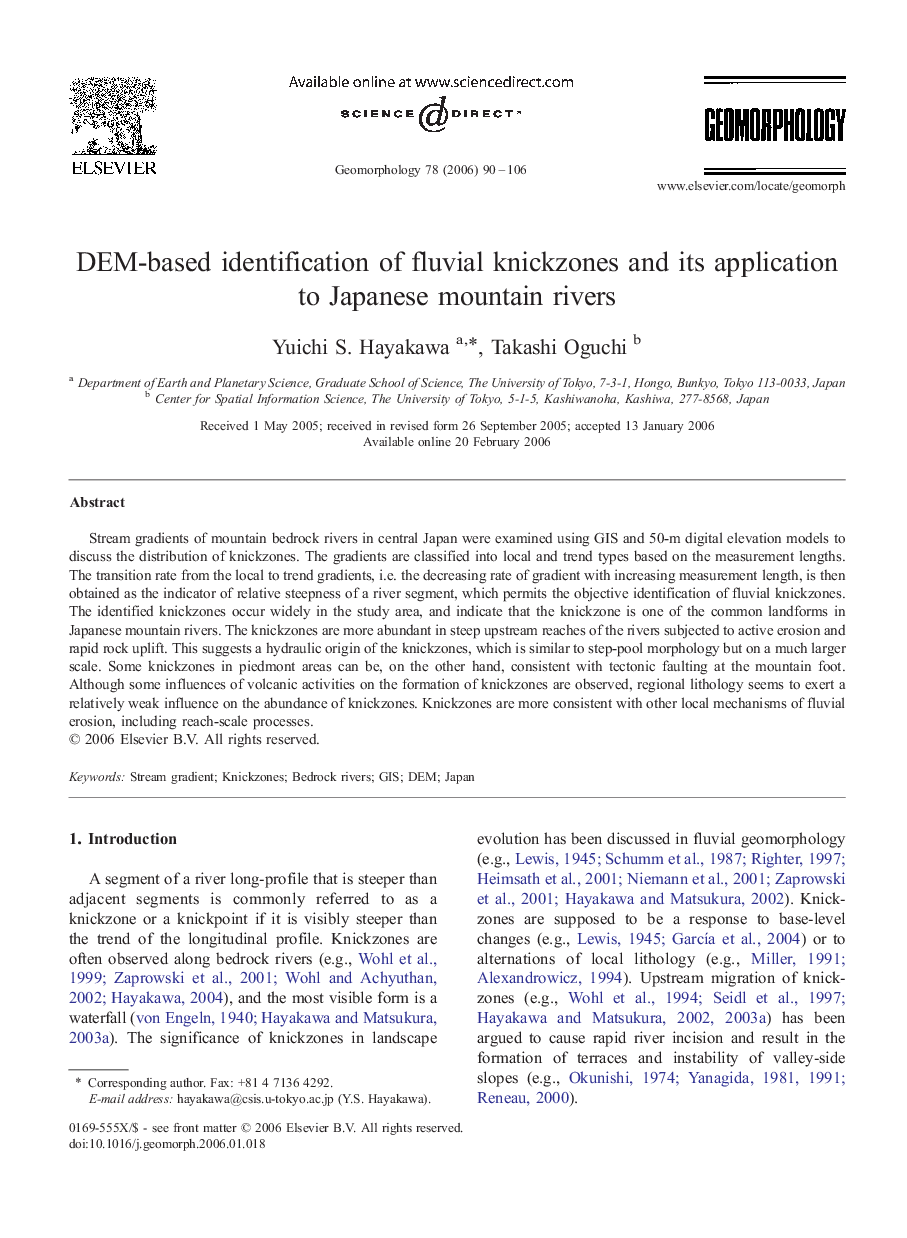| Article ID | Journal | Published Year | Pages | File Type |
|---|---|---|---|---|
| 4687623 | Geomorphology | 2006 | 17 Pages |
Stream gradients of mountain bedrock rivers in central Japan were examined using GIS and 50-m digital elevation models to discuss the distribution of knickzones. The gradients are classified into local and trend types based on the measurement lengths. The transition rate from the local to trend gradients, i.e. the decreasing rate of gradient with increasing measurement length, is then obtained as the indicator of relative steepness of a river segment, which permits the objective identification of fluvial knickzones. The identified knickzones occur widely in the study area, and indicate that the knickzone is one of the common landforms in Japanese mountain rivers. The knickzones are more abundant in steep upstream reaches of the rivers subjected to active erosion and rapid rock uplift. This suggests a hydraulic origin of the knickzones, which is similar to step-pool morphology but on a much larger scale. Some knickzones in piedmont areas can be, on the other hand, consistent with tectonic faulting at the mountain foot. Although some influences of volcanic activities on the formation of knickzones are observed, regional lithology seems to exert a relatively weak influence on the abundance of knickzones. Knickzones are more consistent with other local mechanisms of fluvial erosion, including reach-scale processes.
